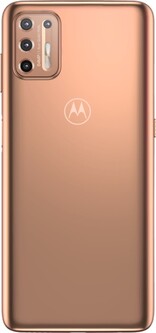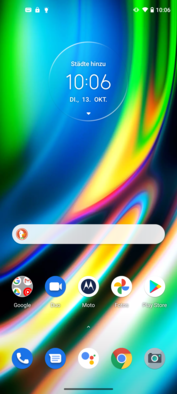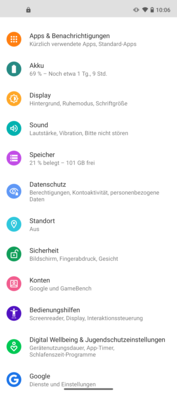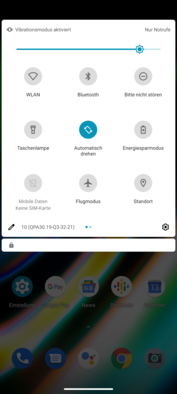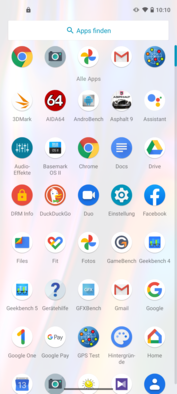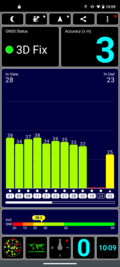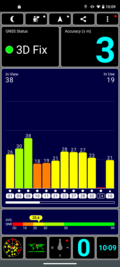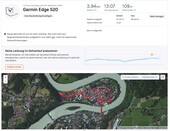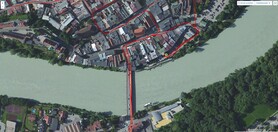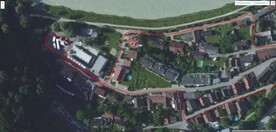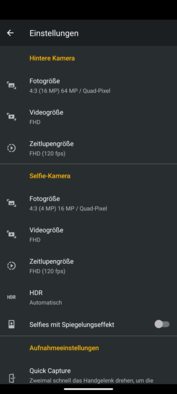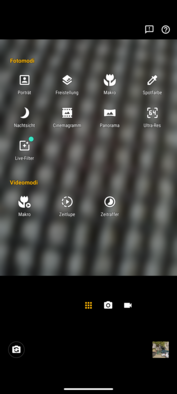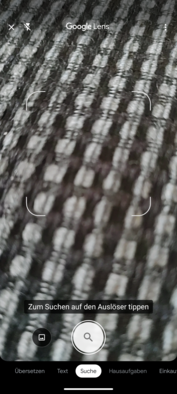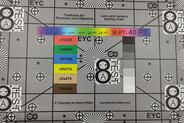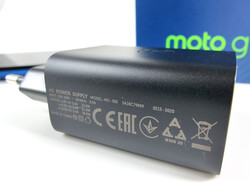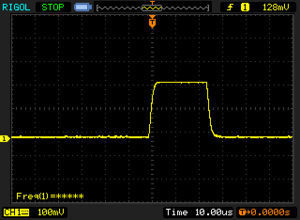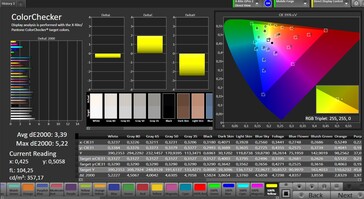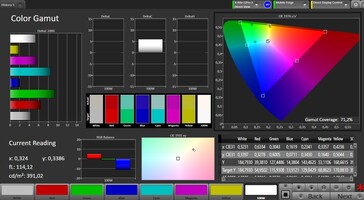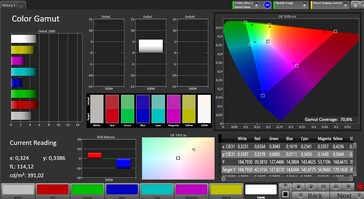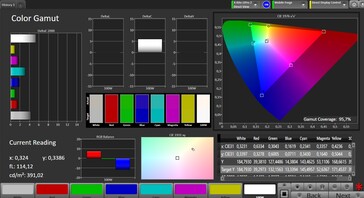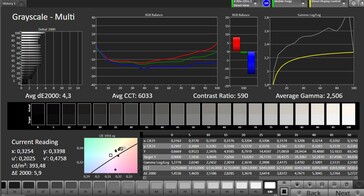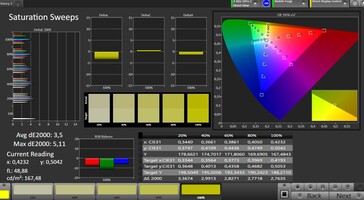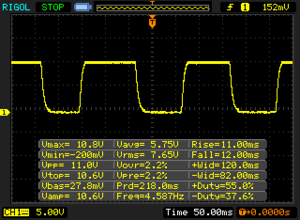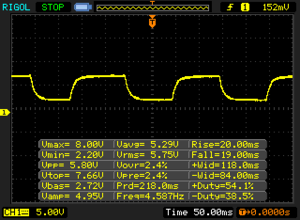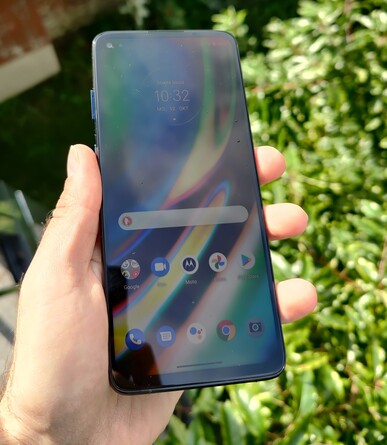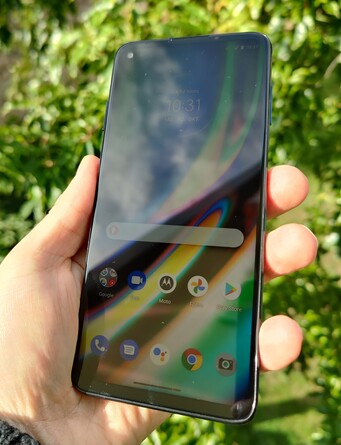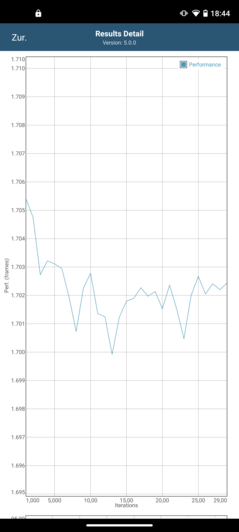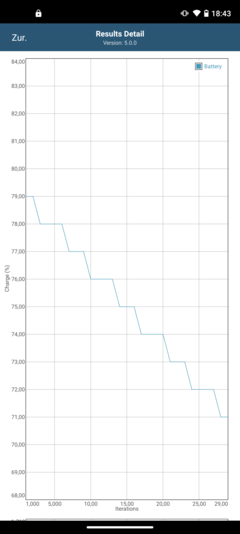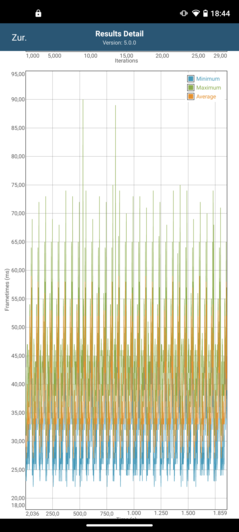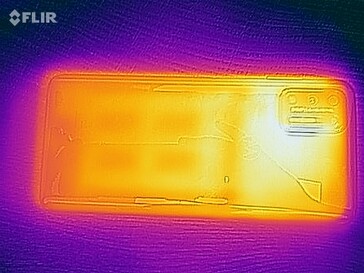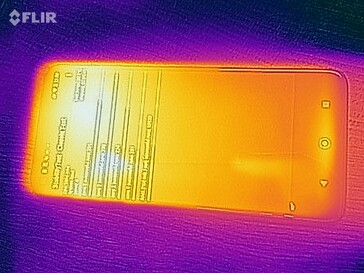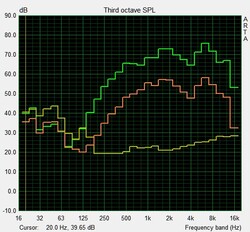Review of the Motorola Moto G9 Plus Smartphone - battery giant with brightness problems

The Motorola Moto G9 Plus will be launched in Germany at a recommended retail price of around 270 Euros (about $289 in the US). For this price, buyers of the Moto mobile phone will receive a 6.8-inch 60 Hz LC display, which features FHD+ resolution and a small cut-out for the 16 MP front camera at the top left. Thanks to a dedicated Google Assistant button, the personal Google Assistant is available at the touch of a button to activate voice control.
Inside, Motorola employs a Snapdragon 730G with 4 GB RAM and 128 GB internal memory. Thanks to a 30-watt power supply, the large 5,000 mAh battery of the Moto G9 Plus is charged using Motorola's TurboPower technology.
Comparison devices
Rating | Date | Model | Weight | Drive | Size | Resolution | Price |
|---|---|---|---|---|---|---|---|
| 79.8 % v7 (old) | 10 / 2020 | Motorola Moto G9 Plus SD 730G, Adreno 618 | 223 g | 128 GB UFS 2.1 Flash | 6.81" | 2400x1080 | |
| 82.9 % v7 (old) | 06 / 2020 | Xiaomi Redmi Note 9 Pro SD 720G, Adreno 618 | 209 g | 64 GB UFS 2.0 Flash | 6.67" | 2400x1080 | |
| 81.3 % v7 (old) | 10 / 2020 | Samsung Galaxy M51 SD 730, Adreno 618 | 213 g | 128 GB UFS 2.0 Flash | 6.70" | 2400x1080 | |
| 79.6 % v7 (old) | 06 / 2020 | Realme 6 Pro SD 720G, Adreno 618 | 195 g | 128 GB UFS 2.1 Flash | 6.60" | 2400x1080 | |
| 79.8 % v7 (old) | 05 / 2020 | Oppo A91 Helio P70, Mali-G72 MP3 | 172 g | 128 GB UFS 2.0 Flash | 6.40" | 2400x1080 | |
| 81.8 % v7 (old) | 10 / 2020 | Xiaomi Poco X3 NFC SD 732G, Adreno 618 | 215 g | 64 GB UFS 2.0 Flash | 6.67" | 2400x1080 |
Case - Motorola smartphone with punch hole
The manufacturing quality of the Moto G9 Plus is on a good level. However, Motorola uses a lot of plastic elements, such as the back, frame and buttons, which is not very beneficial to a valuable haptic. Yet the buttons sit firmly in the frame and hardly wobble at all. Due to the large battery, the case thickness increases to almost 10 millimetres (0.39 inches), making the Moto smartphone look a bit thick.
The Moto G9 Plus does not have an IP certification against dust and water, but it does have a nano-coating that at least protects the smartphone against splash water.
The front consists of scratch-resistant display glass, which merges flat into the frame. The 6.8-inch LC display is bordered on the sides by a relatively thin frame. Also the edges at the top of the casing are quite thin thanks to the punch-hole. Thus, the size ratio of the display to the front of the device is a satisfying 83%.
Features - Moto G9 Plus with 3.5 mm jack
The Moto smartphone has a USB Type-C connector on the bottom of the case, which supports the USB 2.0 standard, and an OTG adapter that allows peripherals to be connected to the G9 Plus. A wireless image transmission of screen contents (Miracast) did not work in the test.
The Moto G9 Plus does not have a status LED nor does it have a true always-on function for notification inputs. However, Motorola again equips its mid-range mobile phone with its familiar preview display function, which shows messages when the phone is lifted. The mid-range model is also equipped with a 3.5 mm jack, dual SIM and FM radio.
The internal UFS 2.1 memory measures 128 GB, which is reduced to approximately 109 GB after deducting the operating system and preinstalled apps. If more capacity is required, the internal memory can be expanded via microSD cards.
Software - Motorola Moto G9 Plus with Android 10
The Moto G9 Plus operating system is based on Android 10 and has the security patch level of September 2020, which the manufacturer has put on its own UI called My UX.
The Moto phone comes with very little bloatware, including the Facebook app, which can be uninstalled without leaving a trace. The system software is very similar to stock Android but offers some customisation options. These include the familiar Moto gestures such as shaking for enabling the torch or turning it over for "do not disturb" and lifting it to mute it when making calls.
Video content from video-streaming services can be viewed in HD quality as the smartphone has passed the Widevine L1 certification process.
Communication and GPS - Motorola Smartphone with NFC
For the communication components, Motorola employs the WLAN standard according to a/b/g/n/ac, dual SIM, Bluetooth version 5.0 and an NFC chip for near field communication including Google Pay.
Within the home Wi-Fi network, the affordable mid-range mobile phone offers solid transmission rates but relatively inconsistent reception. In combination with our reference router Netgear Nighthawk AX12, this results in speeds of an average of 300 Mb/s for the G9 Plus, which is satisfactory for a smartphone in this price class, but it is clearly surpassed by the Xiaomi mobile phones Redmi Note 9 Pro and Poco X3 NFC.
Although the Moto G9 Plus only supports access to a total of 13 LTE bands, it covers all LTE frequencies relevant to Germany - including band 28. However, travelling abroad, including to the US, could prove problematic in this respect (without Band 13 and 25).
| Networking | |
| iperf3 transmit AX12 | |
| Xiaomi Poco X3 NFC | |
| Xiaomi Redmi Note 9 Pro | |
| Oppo A91 | |
| Motorola Moto G9 Plus | |
| Samsung Galaxy M51 | |
| Realme 6 Pro | |
| iperf3 receive AX12 | |
| Xiaomi Poco X3 NFC | |
| Xiaomi Redmi Note 9 Pro | |
| Samsung Galaxy M51 | |
| Motorola Moto G9 Plus | |
| Oppo A91 | |
| Realme 6 Pro | |
We check the tracking capabilities of the mid-range smartphone during a short bike ride. For this purpose we record a route in parallel for comparison purposes with the Garmin Edge 520. There is only 90 metres between the G9 Plus and the navigation device at the end of the four-kilometre long test track and our detailed recordings of the track sections also certify the Motorola smartphone with appealing localisation accuracy.
The positioning is determined by means of the satellite systems GPS, Galileo and GLONASS. The satfix is carried out even inside buildings without much delay, with an accuracy of about three metres.
Call features and voice quality - Moto G9 Plus with VoLTE and Wi-Fi calling
There is nothing to complain about with the voice quality of the Moto G9 Plus. Voices are reproduced in a clear and understandable way and are also characterised as clear by our conversation partner. Thanks to Wi-Fi calling, it is possible to make calls with the Moto mobile phone via the WLAN network if mobile phone reception is limited. In addition, the VoLTE function allows calls to be made via the LTE network.
Video calls via Skype using the built-in front camera also worked smoothly in the test. With the built-in microphone, the call quality is at an appealing level.
Cameras - Motorola mobile phone with quad-cam setup
The front camera of the G9 Plus uses a 16 MP resolution sensor and delivers a quality of selfies that is attractive at this price point. Skin tones are reproduced naturally and the sharpness of the image is fine.
At the rear, Motorola gives its mid-range model a quad camera setup with the main sensor set at 64 MP. The manufacturer is silent about the choice of sensor - most likely the GW1 sensor from Samsung is used here as well, just like with the Motorola Moto G 5G Plus.
The photos have good colour dynamics and solid colour representation, but photos taken with the G9 Plus often suffer from a pronounced blur. Motorola tries to address this problem in the software, which makes subjects appear over-sharpened. Massive weaknesses are revealed by the Moto mobile phone in low-light photography. The dynamics that are appealing in daylight are quickly lost in increasing darkness despite a bright open aperture of f/1.8. Image noise and blur are also very pronounced.
The remaining cameras in the quad-cam system are an 8-MP ultra wide-angle sensor, while the two 2-MP cameras are each used to calculate depth information and for macro photography. The G9 Plus therefore does not have a telephoto lens for zoom shooting, which means that enlargements are based solely on digital zoom, which is ultimately reflected in the low quality of zoom shots.
The 118° ultra wide-angle camera reproduces fairly blurred photos with a low level of detail. Complex structures lose themselves in blur and blurred contours.
Video recordings can only be recorded in UHD at 30 fps; a 4K60 option is missing from the Moto G9 Plus, as is the possibility of 60 fps at 1080p. Stabilisation is satisfactory overall, and switching between the ultra-wide and wide-angle lens is possible during recording.
Image comparison
Choose a scene and navigate within the first image. One click changes the position on touchscreens. One click on the zoomed-in image opens the original in a new window. The first image shows the scaled photograph of the test device.
Main cameraMain cameraLow LightWide angleUnder controlled lighting conditions, our observations regarding the image quality are confirmed. Above all, the autofocus does not adjust properly and causes blurring of our test image, especially at the edges.
The colour deviations from our reference colours are relatively pronounced even under good lighting conditions and even white and grey tones are displayed too warm and brightened by the software of the Moto mobile phone.
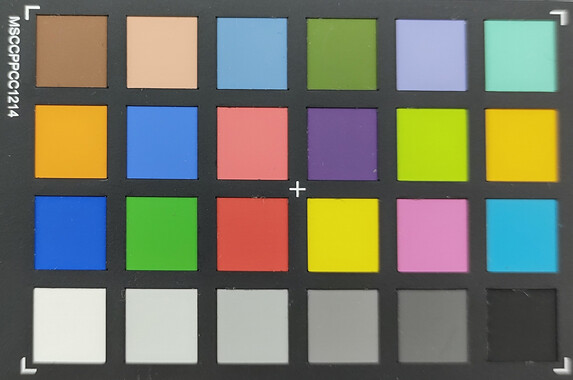
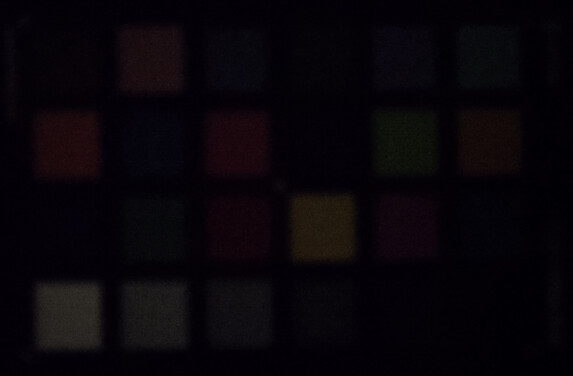
Accessories and warranty - Moto G9 Plus with 30 Watt power supply
Input devices & interface - Motorola smartphone with only 60 Hz
The capacitive touch screen is fast and can be operated precisely all the way to the corners. However, the 60 Hz screen means that the Moto G9 Plus does not appear as lively and fluid as mid-range models at 120 Hz.
The active fingerprint sensor in the power button makes a good impression. The latter is not as fast as you would expect from a mid-range phone, but the sensor reliably unlocks the screen.
Biometric identification by face is also offered. The 2D face unlock function via the front camera identifies the user with a low error rate and short unlock time.
Display - Moto G9 Plus with LTPS panel
The 6.8-inch 60-Hz LC display has a resolution of 2400x1080 pixels, resulting in a pixel density of just under 400 PPI. This puts the Moto smartphone at the same level as our comparable devices in the test.
Motorola also states that the G9 Plus has HDR-10 certification, but the higher dynamic range of high dynamic range content with the built-in panel is hardly noticeable, even to trained eyes - the brightness is far too low for this.
The maximum brightness we measured with a pure white screen background is only 390 nits - a minus of over 50% compared to the Motorola Moto G8 Plus. In addition, we tested the brightness of the panel with an evenly distributed proportion of dark to light areas (APL50). Here we also found a low maximum brightness of 361 nits.
In addition to the brightness deficit, the LTPS panel of the Moto G9 Plus also has an uneven brightness distribution, especially at the lower edge of the display.
| |||||||||||||||||||||||||
Brightness Distribution: 93 %
Center on Battery: 390 cd/m²
Contrast: 591:1 (Black: 0.66 cd/m²)
ΔE ColorChecker Calman: 3.39 | ∀{0.5-29.43 Ø4.77}
ΔE Greyscale Calman: 4.3 | ∀{0.09-98 Ø5}
95.7% sRGB (Calman 2D)
Gamma: 2.506
CCT: 6033 K
| Motorola Moto G9 Plus LTPS, 2400x1080, 6.8" | Xiaomi Redmi Note 9 Pro IPS, 2400x1080, 6.7" | Samsung Galaxy M51 Super AMOLED, 2400x1080, 6.7" | Realme 6 Pro IPS, 2400x1080, 6.6" | Oppo A91 AMOLED, 2400x1080, 6.4" | Xiaomi Poco X3 NFC IPS, 2400x1080, 6.7" | |
|---|---|---|---|---|---|---|
| Screen | 58% | 19% | -5% | -23% | 39% | |
| Brightness middle (cd/m²) | 390 | 610 56% | 626 61% | 442 13% | 594 52% | 623 60% |
| Brightness (cd/m²) | 377 | 579 54% | 632 68% | 419 11% | 613 63% | 600 59% |
| Brightness Distribution (%) | 93 | 92 -1% | 94 1% | 90 -3% | 89 -4% | 93 0% |
| Black Level * (cd/m²) | 0.66 | 0.37 44% | 0.37 44% | 0.54 18% | ||
| Contrast (:1) | 591 | 1649 179% | 1195 102% | 1154 95% | ||
| Colorchecker dE 2000 * | 3.39 | 1.8 47% | 2.88 15% | 6.1 -80% | 6.1 -80% | 1.8 47% |
| Colorchecker dE 2000 max. * | 5.22 | 3 43% | 4.97 5% | 9.7 -86% | 10.6 -103% | 4.7 10% |
| Greyscale dE 2000 * | 4.3 | 2.5 42% | 5.9 -37% | 5.9 -37% | 7 -63% | 3.3 23% |
| Gamma | 2.506 88% | 2.31 95% | 3.441 64% | 2.35 94% | 2.28 96% | 2.26 97% |
| CCT | 6033 108% | 6864 95% | 6415 101% | 7631 85% | 7370 88% | 6712 97% |
* ... smaller is better
Screen Flickering / PWM (Pulse-Width Modulation)
| Screen flickering / PWM not detected | |||
In comparison: 53 % of all tested devices do not use PWM to dim the display. If PWM was detected, an average of 8077 (minimum: 5 - maximum: 343500) Hz was measured. | |||
Compared to the OLED, and also to the IPS competition from Xiaomi and realme, the LC display of the Moto mobile phone has a clear disadvantage in contrast. The ratio of black level to maximum brightness is at a low level of under 1:600.
Analysis of the photo spectrometer and CalMAN software shows a solid average delta E deviation from the sRGB colour space in the factory preset colour profile of 3.4 (colours) and 4.3 (greyscales) for a mid-range smartphone, although the competition is slightly better calibrated. At 6,033 K, the colour temperature we measured in "natural" mode is also cooler than the ideal value of 6,500 K.
Display Response Times
| ↔ Response Time Black to White | ||
|---|---|---|
| 23 ms ... rise ↗ and fall ↘ combined | ↗ 11 ms rise | |
| ↘ 12 ms fall | ||
| The screen shows good response rates in our tests, but may be too slow for competitive gamers. In comparison, all tested devices range from 0.1 (minimum) to 240 (maximum) ms. » 51 % of all devices are better. This means that the measured response time is worse than the average of all tested devices (20.2 ms). | ||
| ↔ Response Time 50% Grey to 80% Grey | ||
| 39 ms ... rise ↗ and fall ↘ combined | ↗ 20 ms rise | |
| ↘ 19 ms fall | ||
| The screen shows slow response rates in our tests and will be unsatisfactory for gamers. In comparison, all tested devices range from 0.165 (minimum) to 636 (maximum) ms. » 58 % of all devices are better. This means that the measured response time is worse than the average of all tested devices (31.6 ms). | ||
Performance - Moto mobile phone with Snapdragon 720G
The Qualcomm Snapdragon 730G of the Moto mobile phone is an ARMv8-based SoC that integrates a total of eight cores, divided into two clusters. The performance cluster contains two fast Cortex-A76 cores with a clock frequency of up to 2.2 GHz as well as a power-saving cluster with six economical Cortex-A55 cores that clock at up to 1.8 GHz. The "G" at the end indicates specialisation in gaming applications. According to Qualcomm, Wi-Fi features are adapted and the Adreno 618 graphics card is clocked higher.
The system speed is good for everyday use, thanks to UFS 2.1 memory, applications open quickly and operation is fluid over long sessions, although animations are not as smooth as on a panel with a refresh rate of 90 Hz or higher. Every now and then, small lags occur with the Moto G9 Plus. Due to the relatively limited RAM of 4 GB, complex apps, such as games, are thrown out of the cache immediately.
In our benchmark measurements, the results of the Snapdragon 730G in Moto mobile phones are well below a Poco X3 NFC with the Qualcomm Snapdragon 732G. Somewhat surprisingly, the values are also often lower than with the Qualcomm Snapdragon 720G of the Redmi Note 9 Pro. However, the results of the G9 Plus are particularly appealing in the system benchmark PCMark for Android.
| AnTuTu v8 - Total Score (sort by value) | |
| Motorola Moto G9 Plus | |
| Xiaomi Redmi Note 9 Pro | |
| Samsung Galaxy M51 | |
| Realme 6 Pro | |
| Xiaomi Poco X3 NFC | |
| Average Qualcomm Snapdragon 730G (251673 - 275660, n=6) | |
| Jetstream 2 - 2.0 Total Score | |
| Average of class Smartphone (23.8 - 387, n=149, last 2 years) | |
| Xiaomi Poco X3 NFC (Chrome 85) | |
| Motorola Moto G9 Plus (Chrome 86) | |
| Samsung Galaxy M51 (Chrome 85) | |
| Xiaomi Redmi Note 9 Pro (Chrome 80.0.3987.99) | |
| Average Qualcomm Snapdragon 730G (45.8 - 50.6, n=6) | |
| JetStream 1.1 - Total Score | |
| Xiaomi Poco X3 NFC (Chrome 85) | |
| Realme 6 Pro (Chrome 83) | |
| Xiaomi Redmi Note 9 Pro (Chrome 80.0.3987.99) | |
| Motorola Moto G9 Plus (Chrome 86) | |
| Average Qualcomm Snapdragon 730G (79.2 - 87.7, n=6) | |
| Samsung Galaxy M51 (Chrome 85) | |
| Speedometer 2.0 - Result 2.0 | |
| Average of class Smartphone (15.2 - 643, n=121, last 2 years) | |
| Xiaomi Redmi Note 9 Pro (Chrome 80.0.3987.99) | |
| Xiaomi Poco X3 NFC (Chrome 85) | |
| Motorola Moto G9 Plus (Chrome 86) | |
| Average Qualcomm Snapdragon 730G (40.4 - 44.2, n=6) | |
| Samsung Galaxy M51 (Chome 85) | |
| WebXPRT 3 - Overall | |
| Average of class Smartphone (38 - 380, n=30, last 2 years) | |
| Xiaomi Poco X3 NFC (Chrome 85) | |
| Xiaomi Redmi Note 9 Pro (Chrome 80.0.3987.99) | |
| Average Qualcomm Snapdragon 730G (66 - 77, n=6) | |
| Samsung Galaxy M51 (Chrome 85) | |
| Motorola Moto G9 Plus (Chrome 86) | |
| Realme 6 Pro (Chrome 83) | |
| Octane V2 - Total Score | |
| Average of class Smartphone (2228 - 126661, n=197, last 2 years) | |
| Xiaomi Poco X3 NFC (Chrome 85) | |
| Xiaomi Redmi Note 9 Pro (Chrome 80.0.3987.99) | |
| Realme 6 Pro (Chrome 83) | |
| Average Qualcomm Snapdragon 730G (16197 - 17768, n=6) | |
| Motorola Moto G9 Plus (Chrome 86) | |
| Samsung Galaxy M51 (Chrome 85) | |
| Mozilla Kraken 1.1 - Total | |
| Realme 6 Pro (Chrome 83) | |
| Average Qualcomm Snapdragon 730G (2770 - 3054, n=6) | |
| Xiaomi Redmi Note 9 Pro (Chrome 80.0.3987.99) | |
| Motorola Moto G9 Plus (Chrome 86) | |
| Samsung Galaxy M51 (Chrome 85) | |
| Xiaomi Poco X3 NFC (Chrome 85) | |
| Average of class Smartphone (257 - 28190, n=157, last 2 years) | |
* ... smaller is better
| Motorola Moto G9 Plus | Xiaomi Redmi Note 9 Pro | Samsung Galaxy M51 | Realme 6 Pro | Oppo A91 | Xiaomi Poco X3 NFC | Average 128 GB UFS 2.1 Flash | Average of class Smartphone | |
|---|---|---|---|---|---|---|---|---|
| AndroBench 3-5 | -4% | -2% | 15% | -13% | -4% | 24% | 411% | |
| Sequential Read 256KB (MB/s) | 489.4 | 498.1 2% | 491.7 0% | 513 5% | 505 3% | 506 3% | 762 ? 56% | 2242 ? 358% |
| Sequential Write 256KB (MB/s) | 186.2 | 171.1 -8% | 189.8 2% | 203.3 9% | 185.3 0% | 173.1 -7% | 300 ? 61% | 1881 ? 910% |
| Random Read 4KB (MB/s) | 134.8 | 122.6 -9% | 123.6 -8% | 158.7 18% | 145.6 8% | 123.4 -8% | 154.7 ? 15% | 299 ? 122% |
| Random Write 4KB (MB/s) | 98.1 | 112.9 15% | 114.5 17% | 154 57% | 28.55 -71% | 112.6 15% | 131.1 ? 34% | 345 ? 252% |
| Sequential Read 256KB SDCard (MB/s) | 85.3 ? | 76.7 ? -10% | 74.8 ? -12% | 86.4 ? 1% | 77.2 ? -9% | 75.2 ? -12% | 76 ? -11% | |
| Sequential Write 256KB SDCard (MB/s) | 65.4 ? | 54.9 ? -16% | 59.4 ? -9% | 63.4 ? -3% | 60.3 ? -8% | 55.6 ? -15% | 59.6 ? -9% |
Games - Motorola mobile phone with Adreno 618
The performance of the Adreno 618 makes it possible to play even more elaborate 3D games from the Android Play Store mostly without stuttering. With GameBench we take a closer look at a few sophisticated games to better assess the 3D performance of the Moto G9 Plus. Both the touchscreen controls and the built-in sensors react with precision in the test.
The shooter PUBG Mobile plays fairly consistently at 30 fps with medium and 40 fps with low graphics. In the racing game Asphalt 9 Legends, the frame rate (20 fps) can drop visibly in high details. The average frame rate is still 30 fps, which is significantly better than the Moto G 5G Plus.
PUBG mobile
Asphalt 9 Legends
Emissions - The Moto G9 Plus runs hot
Temperature
The Moto smartphone warms up quite noticeably under permanent load. We measured a temperature of over 42 °C at the top of the casing. However, the temperature doesn't pose a problem in everyday life.
With the GFXBench battery test, we also analyse the temperature behaviour of the Qualcomm SoC under continuous load. The heat generated inside the G9 Plus does not lead to a reduction in performance. The Manhattan 3.1 test shows that the frame count remains stable with increasing load.
(±) The maximum temperature on the upper side is 42.2 °C / 108 F, compared to the average of 35.2 °C / 95 F, ranging from 21.9 to 247 °C for the class Smartphone.
(±) The bottom heats up to a maximum of 41.4 °C / 107 F, compared to the average of 34 °C / 93 F
(+) In idle usage, the average temperature for the upper side is 27.6 °C / 82 F, compared to the device average of 32.9 °C / 91 F.
Speakers
The Moto G9 Plus has only one speaker at the bottom. The sound quality is satisfactory and, at almost 83 dB, also sufficiently loud. As expected, there is no bass in the audio, and the sound tends to be dominated by treble and mid-range, which are reproduced relatively linear for this price class.
The Motorola mobile phone also has an audio jack. The audio output is attractively loud and unobtrusive. Wireless headphones can be connected via Bluetooth 5.0. The G9 Plus supports the relevant BT codecs, such as AAC, aptX, aptX HD and LDAC.
Motorola Moto G9 Plus audio analysis
(+) | speakers can play relatively loud (82.4 dB)
Bass 100 - 315 Hz
(-) | nearly no bass - on average 67.7% lower than median
(+) | bass is linear (0% delta to prev. frequency)
Mids 400 - 2000 Hz
(-) | nearly no mids - on average 67.7% lower than median
(+) | mids are linear (0% delta to prev. frequency)
Highs 2 - 16 kHz
(-) | nearly no highs - on average 67.7% lower than median
(+) | highs are linear (0% delta to prev. frequency)
Overall 100 - 16.000 Hz
(-) | overall sound is not linear (130.7% difference to median)
Compared to same class
» 99% of all tested devices in this class were better, 1% similar, 0% worse
» The best had a delta of 11%, average was 35%, worst was 134%
Compared to all devices tested
» 100% of all tested devices were better, 0% similar, 0% worse
» The best had a delta of 4%, average was 24%, worst was 134%
Xiaomi Poco X3 NFC audio analysis
(+) | speakers can play relatively loud (89.2 dB)
Bass 100 - 315 Hz
(-) | nearly no bass - on average 24.3% lower than median
(±) | linearity of bass is average (9.8% delta to prev. frequency)
Mids 400 - 2000 Hz
(+) | balanced mids - only 4.9% away from median
(+) | mids are linear (3.9% delta to prev. frequency)
Highs 2 - 16 kHz
(±) | higher highs - on average 5.4% higher than median
(+) | highs are linear (3.7% delta to prev. frequency)
Overall 100 - 16.000 Hz
(±) | linearity of overall sound is average (17.9% difference to median)
Compared to same class
» 16% of all tested devices in this class were better, 8% similar, 76% worse
» The best had a delta of 11%, average was 35%, worst was 134%
Compared to all devices tested
» 36% of all tested devices were better, 8% similar, 56% worse
» The best had a delta of 4%, average was 24%, worst was 134%
Battery life - Motorola mobile phone with large battery
Power consumption
With the "TurboPower" charging technology, the 5,000 mAh battery can be fully recharged in around 60 minutes using the 30-Watt fast-charging function. However, you cannot charge the mobile phone wirelessly.
The power consumption of the G9 Plus is at a good level, but under load, the power consumption could be slightly lower.
| Off / Standby | |
| Idle | |
| Load |
|
Key:
min: | |
| Motorola Moto G9 Plus 5000 mAh | Xiaomi Redmi Note 9 Pro 5020 mAh | Samsung Galaxy M51 7000 mAh | Realme 6 Pro 4300 mAh | Oppo A91 4025 mAh | Xiaomi Poco X3 NFC 5160 mAh | Average Qualcomm Snapdragon 730G | Average of class Smartphone | |
|---|---|---|---|---|---|---|---|---|
| Power Consumption | 4% | 11% | -2% | 18% | -15% | 0% | -10% | |
| Idle Minimum * (Watt) | 0.8 | 0.75 6% | 0.8 -0% | 0.92 -15% | 0.82 -3% | 0.93 -16% | 0.84 ? -5% | 0.849 ? -6% |
| Idle Average * (Watt) | 1.7 | 2.19 -29% | 1.3 24% | 1.79 -5% | 1.73 -2% | 2.47 -45% | 1.953 ? -15% | 1.446 ? 15% |
| Idle Maximum * (Watt) | 2.2 | 2.24 -2% | 1.8 18% | 1.88 15% | 1.75 20% | 2.51 -14% | 2.26 ? -3% | 1.632 ? 26% |
| Load Average * (Watt) | 5.3 | 3.88 27% | 4.8 9% | 5.41 -2% | 2.33 56% | 5.62 -6% | 4.51 ? 15% | 6.93 ? -31% |
| Load Maximum * (Watt) | 7.4 | 5.97 19% | 7 5% | 7.59 -3% | 5.97 19% | 6.93 6% | 6.63 ? 10% | 11.3 ? -53% |
* ... smaller is better
Battery life
In our Wi-Fi test, the built-in lithium-ion battery convinces with an adjusted display brightness of 150 nits - we arrive at a runtime of over 16 hours. During endless playback of a video, Motorola also tickled 22.5 hours out of the 6.8-inch mid-range mobile phone.
| Motorola Moto G9 Plus 5000 mAh | Xiaomi Redmi Note 9 Pro 5020 mAh | Samsung Galaxy M51 7000 mAh | Realme 6 Pro 4300 mAh | Oppo A91 4025 mAh | Xiaomi Poco X3 NFC 5160 mAh | |
|---|---|---|---|---|---|---|
| Battery runtime | 0% | 29% | 7% | -37% | -1% | |
| Reader / Idle (h) | 45.5 | 38.9 -15% | 44 -3% | 40.5 -11% | ||
| H.264 (h) | 22.5 | 18.3 -19% | 28.1 25% | 19.8 -12% | ||
| WiFi v1.3 (h) | 16.1 | 19.6 22% | 25.1 56% | 17.2 7% | 10.1 -37% | 18.6 16% |
| Load (h) | 4.5 | 5.1 13% | 6.1 36% | 4.7 4% |
Pros
Cons
Verdict on the Moto G9 Plus - the Motorola mobile phone lacks that little extra
In our review, the G9 Plus leaves a mixed impression. On the one hand, the mid-range model from Motorola offers very good sound quality, fast charging times and a performance that is appropriate for its price range. The build quality is also on the plus side of the Moto mobile phone.
The Moto G9 Plus is a solid mid-range mobile phone - nothing more but also nothing less.
On the other hand, the Moto-G disappoints in one area that is important for a smartphone: the display - and also the camera performance is not entirely convincing. The LTPS panel has only 60 Hz, is not very bright and in combination with the high black levels this results in a rather below average contrast. In addition, there are typical LCD phenomena such as halos and uneven brightness distribution at the edges of the screen.
Although the Moto G9 Plus comes at a low price of around $289, there are now also LC displays with a high refresh rate (e.g. Poco X3 NFC) or OLED panels (e.g. Samsung Galaxy M51) available in the mid-range segment.
Motorola Moto G9 Plus
- 10/13/2020 v7 (old)
Marcus Herbrich


